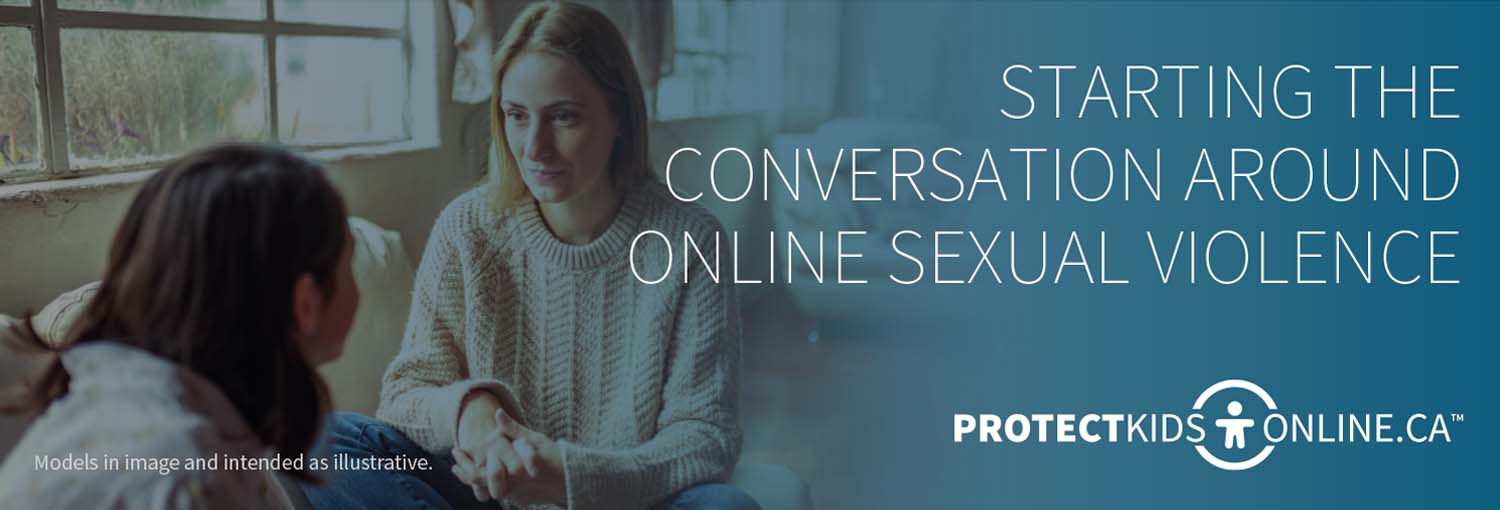Starting the conversation around online sexual violence

The harm facing youth online has been amplified by ever-evolving digital platforms and emerging trends. With increased reliance on screens and time spent online, teens have become increasingly vulnerable to online exploitation and victimization.
Over the past year, Cybertip.ca, Canada’s tipline for reporting online child sexual exploitation, has seen a 37% in the overall online victimization of children.1 Offenders are intensifying control tactics, increasing the use of humiliation, and utilizing multiple accounts to target youth.
One of the most concerning trends is that in a lot of cases youth are not telling anyone what is going on. Many fear being victim-blamed, are worried about letting the adults in their life down, or just don’t know who to turn to for help.
This underscores the critical need to teach youth skills that help them navigate online situations safely and the information on where to go for help if someone is harming them online.

WHAT IS ONLINE SEXUAL VIOLENCE?
Some examples of online sexual violence include:
- Someone randomly sending youth sexual images (e.g., cyber flashing) and/or sexual messages online.
- Girls in particular are increasingly experiencing cyber flashing on platforms such as Snapchat® and Instagram®. Unfortunately, this form of online sexual violence is becoming widely accepted as a “new norm.”
- Unwanted and random requests for youth to send sexual images or videos from someone youth may or may not know.
- Pressure and coercion tactics have become increasingly aggressive and prepared by both adults and youth’s peers.
- Even if the youth knows the person asking for sexual images or videos, images or videos sent under pressure are not considered to be consensual.
- Recording youth without their knowledge, and forwarding/posting or threating to forward, those sexual image or videos
- Cybertip.ca is seeing increasingly aggressive control tactics used by offenders to pressure youth into sending sexual images, such showing youth they know their address by sending items like empty boxes to their house.
Online sexual violence is VERY different from sharing intimate images within a consensual relationship. Online sexual violence is unwanted, unsolicited, and aggressive.

What Can Parents Do?
It is important to be aware of the increasing nature of online sexual violence youth are exposed to and/or dealing with. Here are some things we strongly encourage:
- Having regular conversations with your teen to increase their awareness about safety concerns online and talking with them about how to handle situations they may encounter. See the scenarios in Cybertip.ca’s How to Talk with Teens about Online Sexual Violence PDF to help get the conversation started.
- Staying curious about, and trying to understand, the social pressures your teen is facing. Listen to what they have to say about pressures teens are faced with and how they feel about it.
- Talking about the issues around sharing sexual images online, considering issues such as negotiating images in a consensual relationship, and when coercion is being used instead of consent.
- Reminding youth you are in their corner and it’s your job to try to prevent bad things from happening. Let them know even if they find themselves in over their head, and are not sure what to do, they can ALWAYS come to you for help. It is important to remind teens that the supportive adults in their lives will always stand by them and help them get through tough situations together.
Instances of online sexual violence require immediate intervention.
You can report online sexual violence and victimization to cybertip.ca/report

What Can Youth Do?
- If you are experience any form of online sexual violence, talk to a safe adult in your life. They are there to support you; you are not alone.
- You can also report any form of online sexual violence or victimization to cybertip.ca
For more information and resources for both families and youth, visit cybertip.ca/osv.
1 2021 versus 2020.